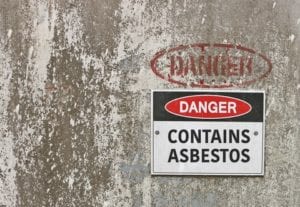Banning Asbestos Still Best Way to Prevent Mesothelioma
 A new Spanish report concludes that banning asbestos is the most effective way to prevent new cases of mesothelioma and asbestos-linked lung cancer.
A new Spanish report concludes that banning asbestos is the most effective way to prevent new cases of mesothelioma and asbestos-linked lung cancer.
Experts in epidemiology and occupational health conducted the research. Their report appears in a recent issue of the Spanish medical journal, Gaceta Sanitaria.
The research shows that all types of asbestos raise the risk for lung cancer and mesothelioma and that some are extra dangerous. The study found that people exposed to needle-shaped amphibole asbestos fibers had the highest rates of illness.
They say the only way to fully protect people against both amphibole and serpentine asbestos (the other major category) is banning asbestos completely.
Asbestos Restrictions in the US
The US EPA, the Department of Health and Human Services, and the International Agency for Research on Cancer classify asbestos as carcinogenic. That status is based on decades of prior research linking asbestos to malignant mesothelioma, lung cancer, asbestosis, pleural plaques and even ovarian cancer.
Given the scientifically-proven risk to human health, many people are surprised to learn that asbestos is not banned in the US. Asbestos is now banned in 67 other countries and territories. But asbestos-industry lobbyists have fought hard to keep asbestos legal in the US.
Instead of banning asbestos, the EPA has enacted a series of regulations that are supposed to protect people from pleural mesothelioma and other diseases. Those policies have allowed companies to keep using chrysotile asbestos with restrictions. Chrysotile asbestos is the most common type used in industry.
But in December 2020, a new EPA evaluation acknowledged “unreasonable risks to human health for ongoing uses of chrysotile asbestos”. Chrysotile asbestos deposits often contain small amounts of amphibole, too, making them even more toxic. It may move the US a step closer to banning asbestos.
The Newest Report on Banning Asbestos
The new Spanish study aimed to discover what levels of asbestos exposure cause different health effects. They reviewed English-language asbestos and mesothelioma studies between 1980 and 2021 and picked ten for in-depth analysis.
The analysis found that the longer and thinner asbestos fibers are, the more likely they are to trigger mesothelioma or lung cancer. Even a tiny amount of exposure to these fibers can be deadly. Even the EPA says that no amount of exposure to any kind of asbestos is “safe”.
That’s because the long thin shape of all asbestos fibers make it hard for the body to expel them. Over time, they can cause normal membrane cells to turn into mesothelioma cells.
José María Ramada Rodilla, lead author of the Spanish report, says there is only one way to keep people safe: “Banning all asbestos exposure remains the best measure to preventing its negative health effects,” he writes.
Asbestos is still in many gaskets, brake pads, home insulation and other products. In May, the Asbestos Disease Awareness Organization filed suit against the EPA to get them to address the problem of this “legacy” asbestos.
Sources:
Ramada Rodilla, JM, et al, “Fiber burden and asbestos-related diseases: an umbrella review”, June 11, 2021, Gaceta Sanitaria, Online ahead of print, https://linkinghub.elsevier.com/retrieve/pii/S0213911121000820
“EPA Actions to Protect the Public from Exposure to Asbestos”, Accessed June 17, 2021, https://www.epa.gov/asbestos/epa-actions-protect-public-exposure-asbestos





